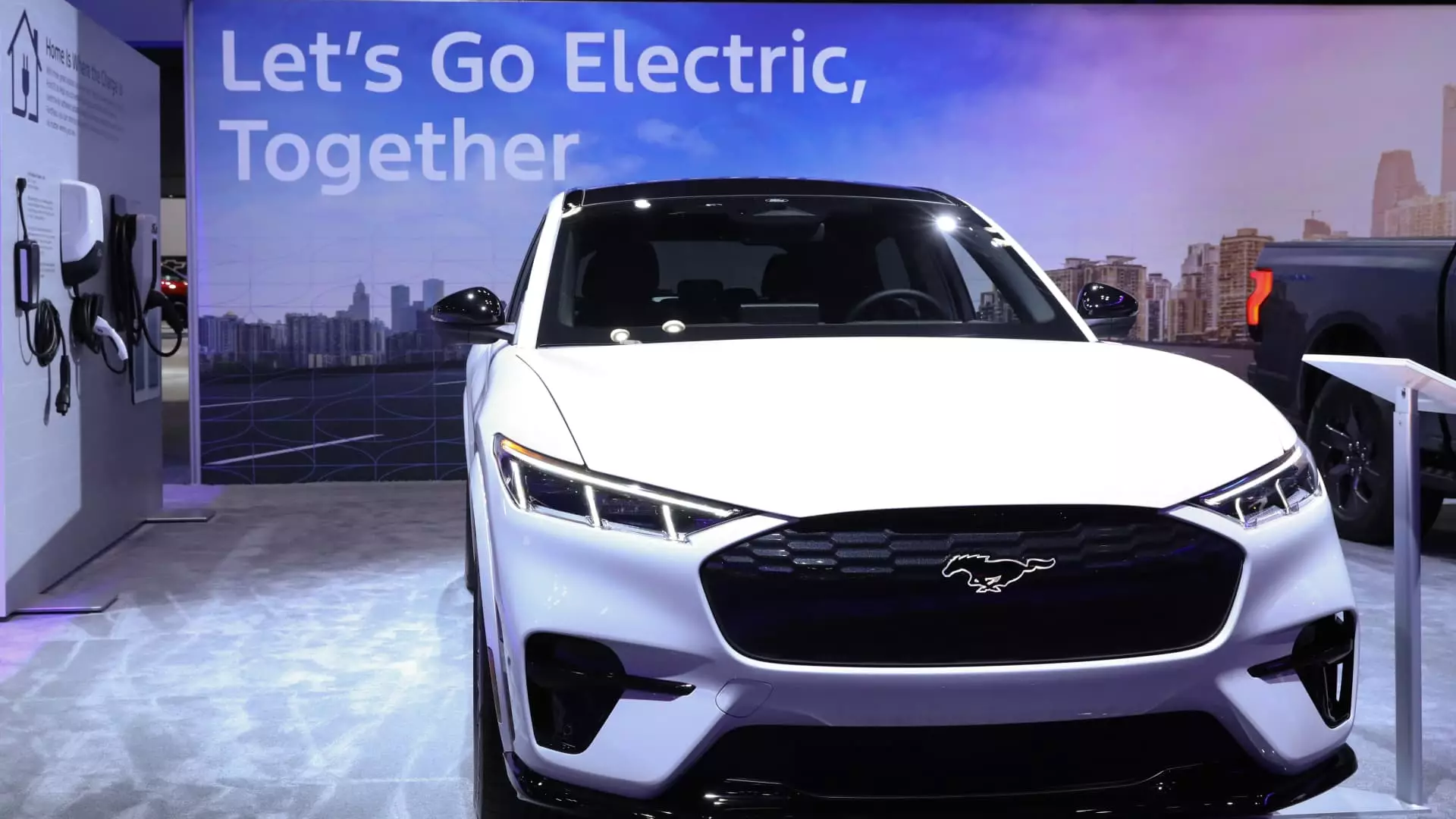Ford Motor experienced an 11.2% increase in U.S. new vehicle sales in May compared to the previous year. This growth was primarily driven by a significant surge in hybrid and all-electric vehicle sales, with both segments showing a remarkable 65% increase. In contrast, sales of traditional vehicles with internal combustion engines only rose by 5.6%. Despite the impressive growth in hybrids and EVs, these vehicles accounted for just 14% of Ford’s total sales for the month, amounting to approximately 26,600 units.
The rise in sales of electric and hybrid vehicles presents a double-edged sword for Ford, as the company’s Model E electric vehicle unit has been plagued by substantial losses. In April, Ford reported a staggering loss of $1.32 billion on just 10,000 vehicles wholesaled from January through March. This translates to a loss of $132,000 per vehicle sold by the unit. While the division includes EV-related businesses like software, the financial implications of such losses are concerning for investors.
Success Stories: F-150 Lightning and Mustang Mach-E
Despite the challenges faced by the electric vehicle unit, Ford saw significant success with the sales of its all-electric F-150 Lightning pickups, nearly doubling the sales compared to the previous year. Additionally, sales of the Mustang Mach-E EV witnessed a substantial 46% year-over-year increase. These positive outcomes signify consumer interest and acceptance of Ford’s electric vehicle offerings in the market.
Ford’s strategy to capitalize on the hybrid technology was evident in the spike in hybrid vehicle sales, underscoring the company’s commitment to this segment. The automaker announced earlier this year its decision to delay the production of new all-electric vehicles in favor of offering hybrid options across its entire North American lineup by 2030. This strategic shift reflects Ford’s anticipation of growing demand for hybrid vehicles in the market.
Overall Sales Performance and Future Outlook
Ford reported a total of 877,685 units sold in the U.S. through May, representing a 5.6% increase from the same period in 2023. The sales growth was primarily driven by a notable uptick in SUV sales by approximately 10% and a 2.5% increase in truck and van sales. Looking ahead, Ford’s focus on expanding its hybrid offerings and addressing the challenges within its electric vehicle division will be crucial in sustaining its sales momentum and staying competitive in the evolving automotive landscape.

Leave a Reply